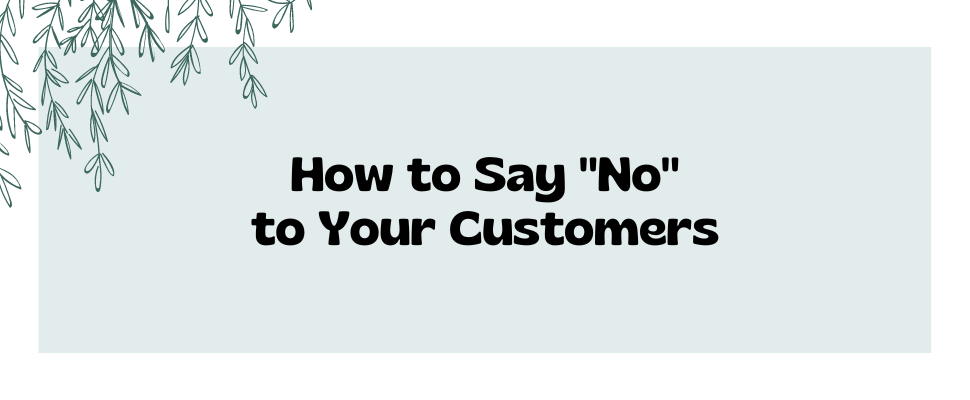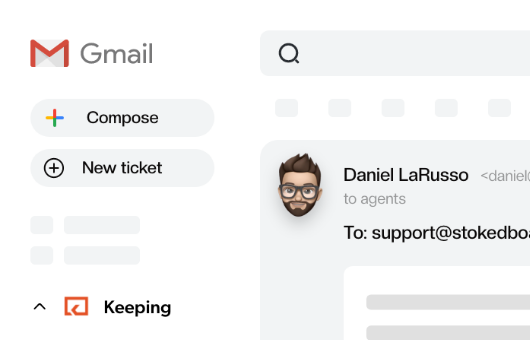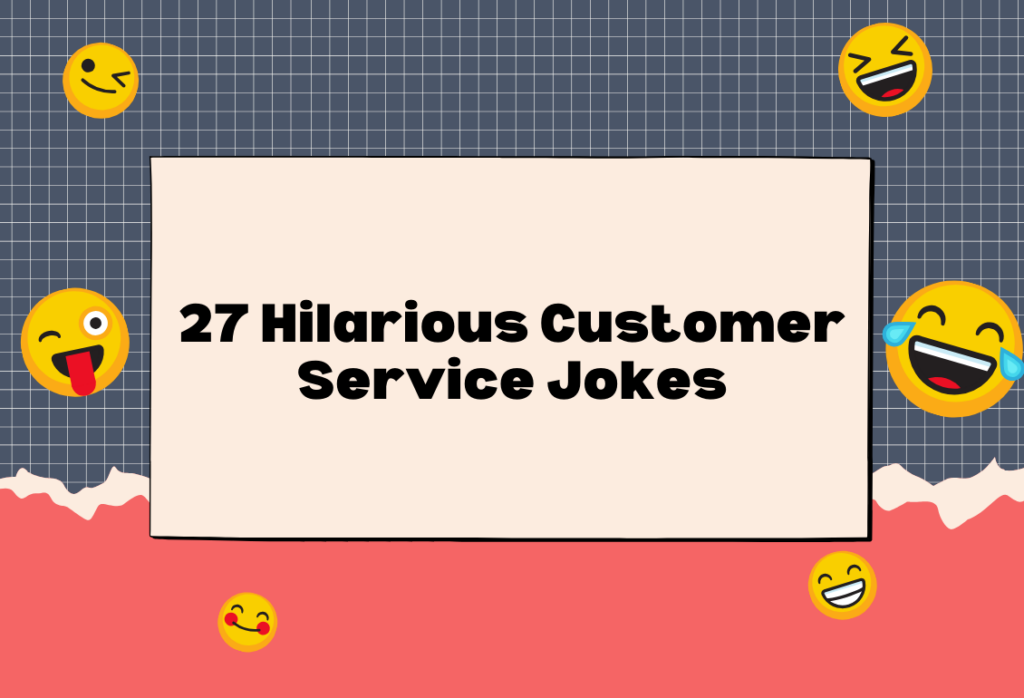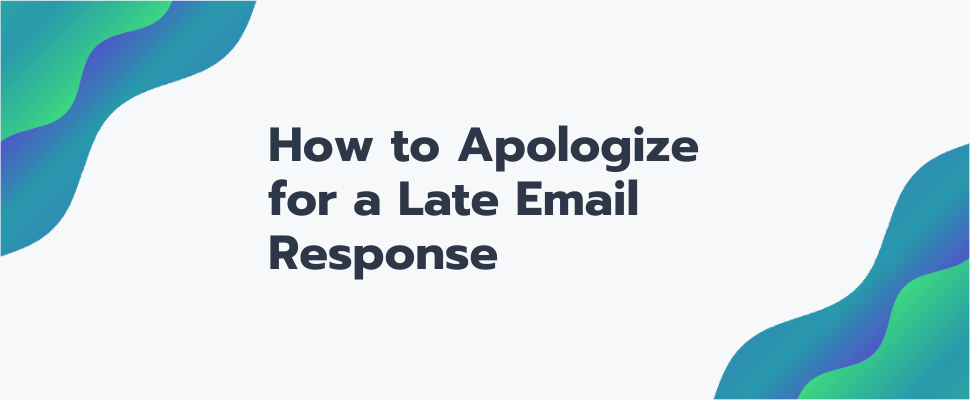
How to Say No to Customers: 11 Tips + Examples
The big no. It is the one word your customers will not like hearing from you. But sometimes, you just have to refuse service to a customer. By reading a few tips you’ll be able to say no in a way that your customers will not complain about a negative customer experience.
You know the trouble of denying a customer’s request. B2B customers don’t like to hear ‘no’. But you can’t fulfill 100% of their demands. Sometimes it’s due to product shortcomings; other times, customers act entitled. Either way, you have to learn how to say no to customers.
You can’t blatantly reject a customer’s request and expect them to move on. They won’t hear any reasons or excuses to back up your answer. Moreover, any hurtful remark or even a bitter dose of facts can send customers away—and that is the harsh truth. You must sugarcoat your words and deliver them in the best way possible to retain the customer.
This article covers tips and tricks to the art of saying ‘no’ to your customers. By the end of this post, you’ll master how to deliver the bad news to your customers so that they appreciate your response and not be hurt by it. Let’s begin!
In what situations can you say no to the customer?
If you’re wondering, ‘why would I ever say no to the customer?’ you may be new in the customer service game. There are plenty of situations when you have to deny a customer request. Some of them are as follows:
- Network issues
- The customer asks you to go against the company policies
- The customer has unrealistic desires
- The customer is abusive
- The demand exceeds your capacity
- You’re overbooked with queries
11 tips to say ‘no’ so you don’t lose the customer
You must say ‘no’ in situations and bear the consequences. You can reduce the chances of losing the customer by learning different ways to say no and following up with other responses. Below are the tips to help you say no with confidence:
Lead with empathy
Recognize the fact that the customer is, in fact, having an issue. They’ve come to customer success representatives for a solution. A straightforward refusal may hurt their feelings. Remember, you’re talking to another human being. Begin by thanking the customer for coming to you for help and doing business with you. Gratitude will consistently build a more robust connection with the customer, and they’ll trust you more.
To show empathy, you must first listen to the customer very carefully. You may already know about their issue and have a response ready, but it’s never helpful to jump to conclusions. Maintain curiosity from your side so that the customer feels heard.
Examples:
- “Your request makes a lot of sense. I can see how this is causing you trouble.”
- “I see this issue is creating a lot of bottlenecks in your day-to-day activities.”
- “I see how this issue is hampering your productivity. Let’s see what we can do for you at this instant.”
- “I understand how this feature is crucial for your business. I also see it needs to be fixed ASAP.”
Understand the root cause of the customer’s problem
Sometimes customers may come up with unconventional questions, or they simply can’t frame a question well enough for you to understand. In these scenarios, you might feel agitated and deny their request without much thought. But this can get you into trouble. As per Zendesk’s report, more than 6 out of 20 customers would switch to your competitors after just one bad customer experience.
It’s essential to understand the context behind any question. When you know the motivation behind a query, you can direct your customer to the next course of action.
Ask the following questions to get more clarity about your customer’s problems:
- “Can you tell me when you started experiencing this problem?”
- “How did you find this issue?”
- “Can you demonstrate what you did that resulted in this issue?”
- “Can you provide more details about this issue, so I don’t misunderstand anything?”
The goal is to help the customer explain the issue more clearly. It also gives you time to find a suitable reply that satisfies the customers. If you’ve been at the service desk for some time, you may already know that you can’t solve the issue. But still, when you give your customers a chance to explain the problem, they know they’re heard and trust you more.
Maintain a consistent tone of voice
It’s natural to get hyperactive sometimes, especially when you’re bombarded with service requests and queries. You get personal when a customer showers you with compliments and talks highly about your product. You send emojis or GIFs in the chat support and may talk in an informal tone —which is fine.
But you become stiff when a customer points out a mistake or calls you out for a fault. The voice changes into formal, and the emojis generally stop. But this is not the best way to deal with the problem. A stiff ‘no’ is this tonality can cost you the customer.
A stiff tone shows a lack of empathy and will increase the tension in the room. Maintain a constant friendly tone no matter what you’re discussing.
Involve your customer in the solution
We all would love a script of responses that fit every single query. But it can’t happen. Sometimes issues are challenging to solve, and you can’t give answers promptly. In this situation, involving the customer in the conversation is best. Even if you know the issue is unsolvable, walk the customer through the process.
This way, they understand the process of developing a solution. You reach a conclusion together, and the customer sees the issue can’t be solved. You can continue the conversation by suggesting alternatives or directing the customer to a helpful resource.
Examples:
- “If we tried this, do you think you would improve your situation?”
- “Does this solution work for you? Let me know if you have difficulty implementing the solution.”
- “What would be a fair solution to this issue, according to you?”
Offer alternate solutions to the customers’ problem
It’s helpful to offer workarounds if you can’t help your customers with what they need. Offer other services, updates or features that may help the customer achieve their goals. Sometimes, an alternate solution can be your competitor. Suggesting a competitor may hurt, but if you genuinely care about the customer, their success means much more.
Suggesting alternatives boost the credibility of your business. The customer recognizes that you’re moving away from a sale to help them. In the long run, they recommend your company to their peers because they know you go above and beyond to help your customers.
Example:
- “Sorry, we couldn’t resolve your issue due to certain shortcomings. If you’d like, here’s another product/feature that would work great for your requirements.”
- “Could you tell me why you need this? Maybe I can suggest another approach.
Explain why you’re saying no
The sole purpose of the customer service desk is to help customers in need. But sometimes, you can’t provide what your customers are asking for. In this scenario, you must communicate the reasons behind the denial. State facts about why you can’t solve their problem. With a proper explanation, the rejection stings less, and the customer understands your point of view.
Give good examples and use cases of similar issues that may have come up in the past. Tell them how previous customers tackled the problems when your company couldn’t solve them. Transparency is the key to maintaining long-lasting customer relationships. The customer should not feel that you’re avoiding them and saying ‘no’ because you don’t want to solve their query. You’re educating them on the topic by explaining the proper reason, which further enhances your relationship with your customers.
Examples:
- “Thanks for informing us about this issue. However, your request falls outside of our company’s service policy. We would love to help you out, but the rules bind us. Here’s a self-help guide for your reference. Don’t hesitate to contact us in case of any doubts.”
- Serving you is always our pleasure. We understand this issue is critical for you, but the timing is inconvenient. We can’t look into it right now due to a maintenance issue on our end. The issues arose due to sudden power cuts, and we’re working to solve them. We’ll get back to you as soon as we’re back online.”
The above examples display elaborate explanations for various situations. The point is to explain why you can’t attend to a customer’s issue.
Share helpful content with the customer.
So you’ve denied a customer service request for some reason. Now what? Your responsibility doesn’t end here. You must share helpful content with your customer so that they can solve the issue themselves. Valuable content includes self-help guides, case studies, blogs, ebooks and whitepapers, and useful information about the topic.
Ask your customers whether they want to join your email newsletter for more information about your product. You can also create content, especially for that customer. The customer will recognize this as a good gesture and realize that you’re willing to go the extra mile to help them.
Examples:
- “Hey, I understand you’re in a tight spot right now, so I’ve gathered a few resources to help you overcome the trouble. Here’s our e-book with a detailed explanation of the topic and various use cases with actionable tips for your convenience. I’ll share the free e-book via email. Let me know if this helps.”
- “Hey, sorry we couldn’t solve your query today, but we found some resources that would be helpful in your scenario. Here are some blogs written by our in-house content team. Read them to understand the product better and implement it into your workflow. Let me know if this helps.”
Avoid standard responses
Every salesperson has some standard responses to customer queries. These are your good old statements that work well with various questions. They may Fastrack your customer service, but they tait the image of your company in the customer’s mind.
Every customer wants unique treatments and wants to be heard. Don’t make them feel like they’re just another person waiting in the queue. Moreover, every customer query is unique in some aspect; that’s why all standard responses don’t work for all customers.
Follow up for feedback
After saying no, it’s essential to ask what customers thought about your service. Be proactive and initiate conversation from your side. Even if they’re angry or annoyed by your response, give them a chance to rant. It gives them closure. This also allows you to extend the conversation and truly understand what customers think about your product.
Different ways to take customer feedback:
- Live chat: Live chat always surpasses machine-generated messages. Customers want human contact while approaching a customer service agent. 56% of customers say automated messages are the most frustrating thing about customer support. It’s best to gather customer feedback on live chat, where customers can express their feelings most genuinely.
- Social media: Use it to gather customer feedback if you have a good social presence. Use social media polls and track company mentions to find what customers say about your product.
- Interviews: Interviews are the most straightforward approach towards customer feedback. Prepare relevant questions and motivate the customers to get detailed answers.
Feedback lets you peek into the mind of the customer. You can also enhance your customer service facility and improve your product with proper customer input.
Offer alternatives to the customers
The customer may be experiencing an issue that cannot be solved. At least not as quickly as they expect. In such cases, you can provide an alternative service or solution. For example, if a customer is not able to use your product and your team cannot figure out what is wrong, you can offer an alternative to that product or offer a refund for the meanwhile.
Later, if and when the issue is resolved you can follow up with the customer and let them know that they could continue using your product. This creates an impression that you care about your customers more than generating revenue.
Breaking up with the customers is fine
With so much stress on customer retention, letting a customer go seems like an alien concept. But sometimes, customers can be entitled – there, I said it. Some of them dial-up customer support with an issue that arises because they’re misusing the product. Some may be too arrogant to demonstrate what’s causing the problem or implement your suggested solution.
Moreover, your product can’t satisfy 100% of the customers. It’s designed to perform particular tasks in specific ways. You want satisfied customers with your product and suggest reasonable updates to improve the quality of both of you. You can only do so much for such customers. Sometimes, it’s best to let go.
Say no with style
Saying no is a part of the customer service job. You won’t have a solution for every single query all the time. But if you say ‘no’ in a certain way, you can save a customer and earn their confidence. All the tips above fit different customer queries. Mix and match them to specific ones, and you’ll be in line to becoming an excellent customer service agent.
Join 150+ teams that are sharing inboxes with us
The easiest way to upgrade your shared Gmail account. There’s no credit card is required.






